How to make control equipment for an aircraft simulator
Just a couple of years ago, I first heard the word - a kopter. At the same time I wanted to understand what it is and how it works. Let’s skip the Copter theory this time - more than one post has been written about it. My article is about getting skills to manage this very Copter , as well as, in principle, any flying model. Of course, the first thing we need is the aircraft itself! But do not rush to lift it into the air! 10 out of 10 first flights on copters end with broken screws and frames.
To begin with, my advice to you is to practice in the simulator, and for this, get a simple device for connecting your control equipment to a computer! This device is nothing but an adapter that turns a sequence of signals coming from the controller of your hardware into a sequence of codes that are understandable to the software of your OS. As a result, we get a gaming device: a joystick.
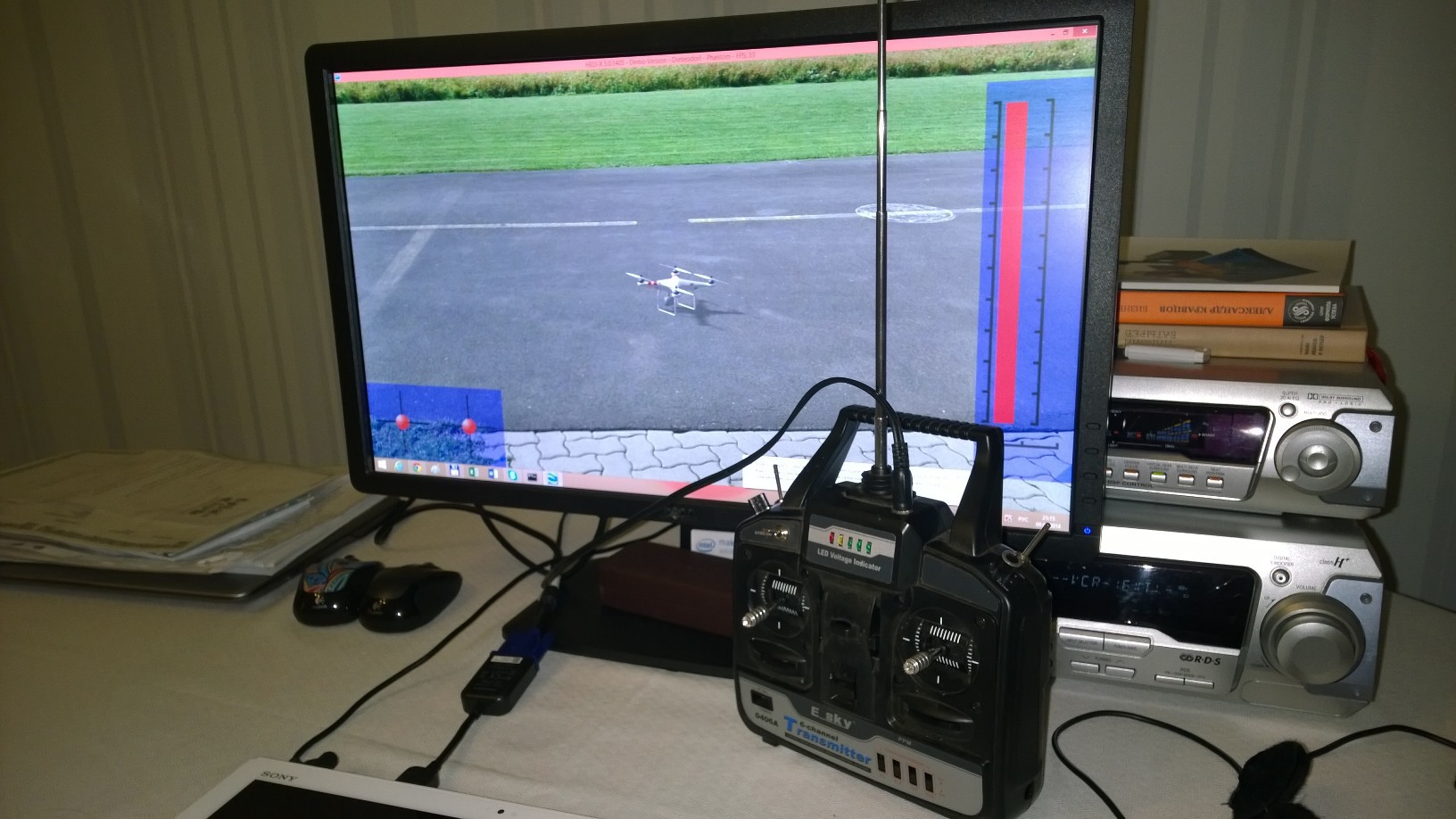
')
How to do it? We will need:
So, let's start in order.
As my first equipment, I purchased the simplest 4 channel equipment through the aircraft model forum. It works at 72 MHz, so now it can be used without regret for the simulator, and for flights I got a 2.4 GHz version. This time, for clarity, I used exactly 72 MHz hardware!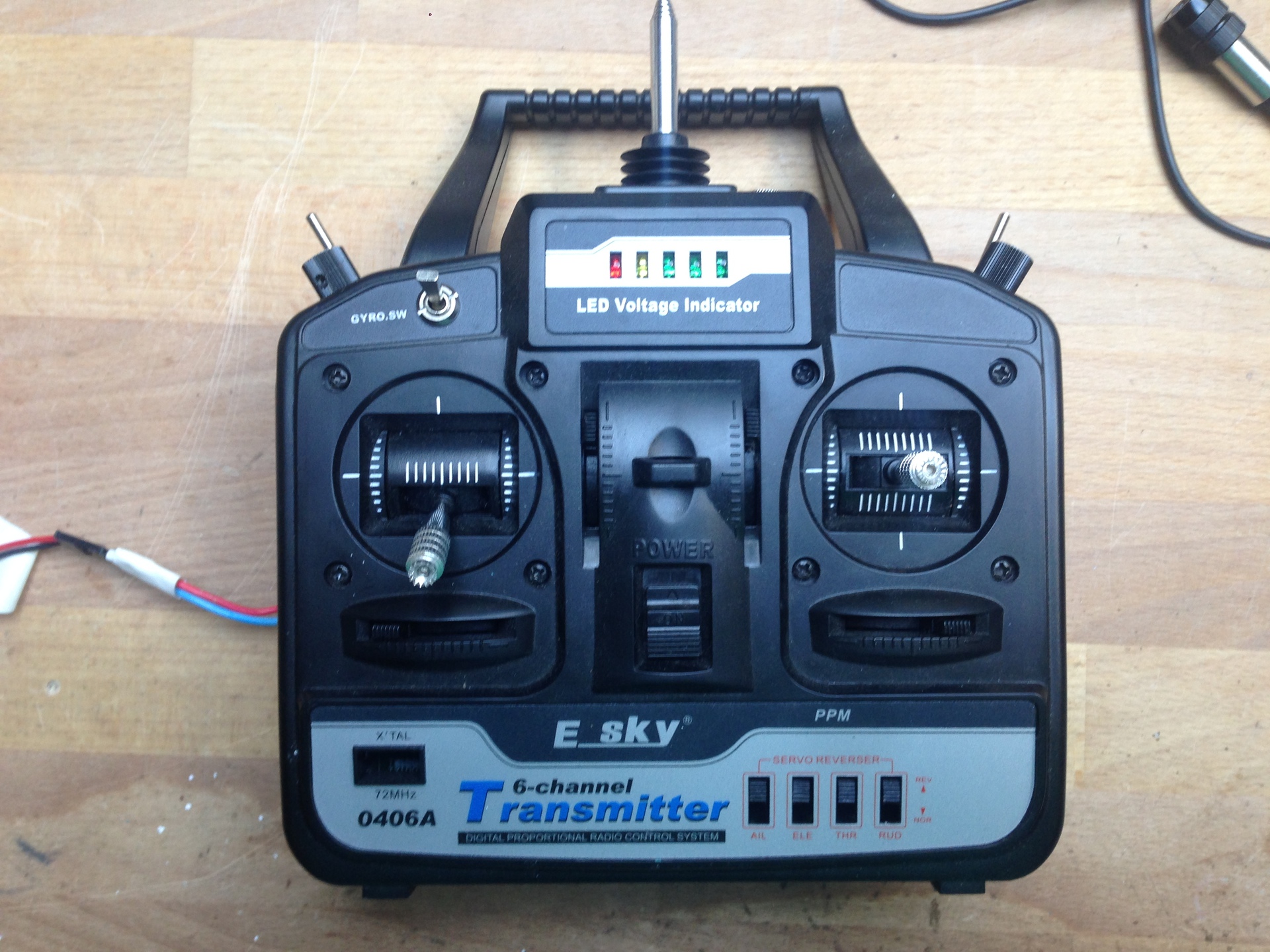 You can also use any other option. For example, for everyone's favorite Turnigy TGY9x 3.5mm jack, the connector is immediately placed on the back wall.
You can also use any other option. For example, for everyone's favorite Turnigy TGY9x 3.5mm jack, the connector is immediately placed on the back wall.
You can use the standard connector on the back cover of the equipment chosen by us to connect to the adapter.
 .
.
If you have Futaba, you will need an adapter (which, by the way, usually comes bundled with an adapter). Or our first intervention with a soldering iron!

Here is the standard connector on our equipment.
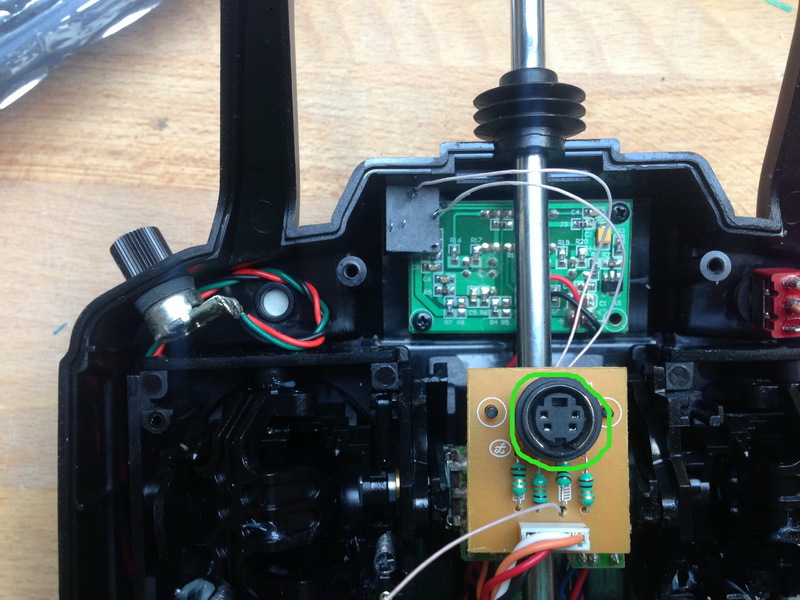
And this is the result of our work. Seen an additional connector.
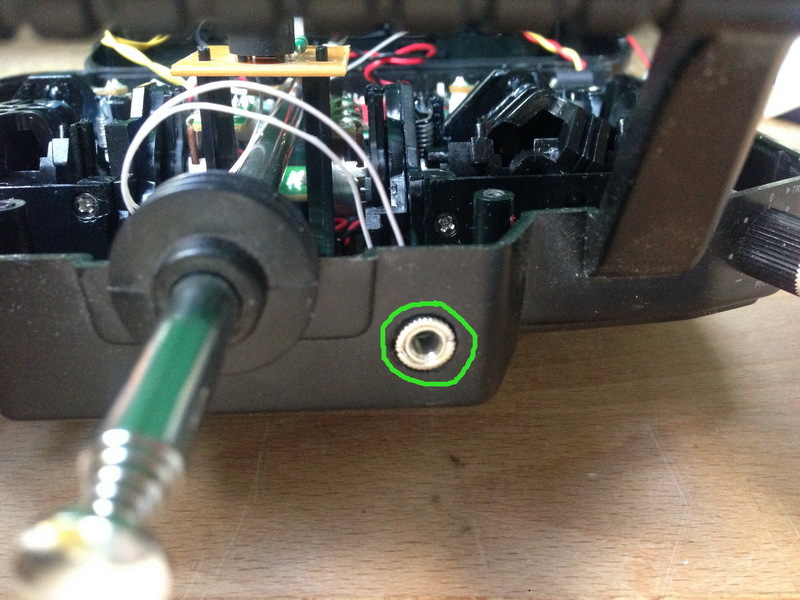
Why do I prefer to embed a standard 3.5 mm jack into the case? A cord with two minijacks is much easier to find and replace in case of a breakdown. Yes, and lengthen conveniently. Also, when using a standard connector on the back cover of the equipment, it is not convenient to put it on the table - because the connector in this case will play the role of a backup - which leads to an even faster cable failure.
Using an oscilloscope, and based on an external examination - we find contact with the PPM signal.

and go to him.

Further, this signal wire must be connected to the 3.5 mm jack via a resistor.


I used a resistor on the board of the standard connector. There I also soldered the common wire. After all of the above and in order to save power, I disconnected the connector from the transmitter board (we only need a controller that monitors the position of the sticks and issues a PPM signal.
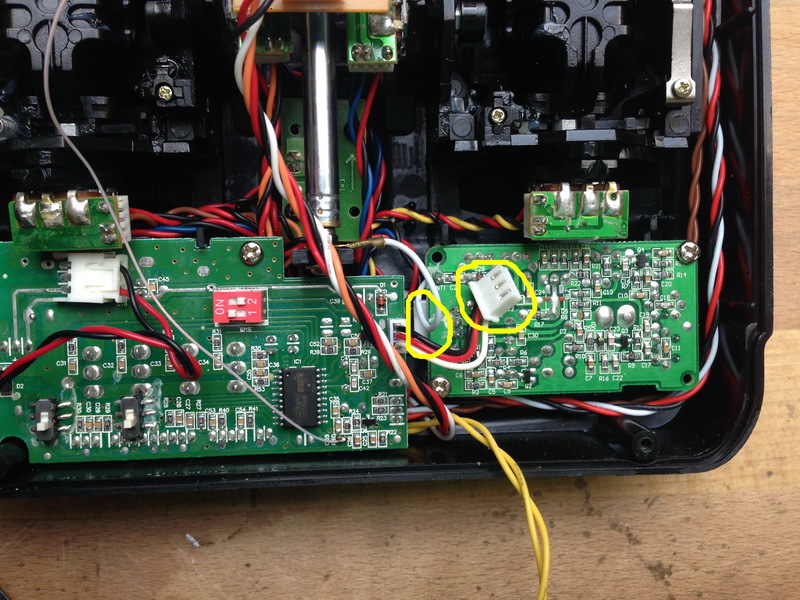


Besides him I flew to:All of these simulators have demo versions available for download without purchase. So before you decide on a purchase, you can try to fly and choose the one that you like the most. From myself I’ll only add - although FMS doesn’t have good graphics - it still remains the most common simulator, since a large number of aircraft designers draw for he models and landscapes. So we got a working simulator, which will save a lot of money on screws, frames and other breakdowns, will allow you to enjoy this flight.
To begin with, my advice to you is to practice in the simulator, and for this, get a simple device for connecting your control equipment to a computer! This device is nothing but an adapter that turns a sequence of signals coming from the controller of your hardware into a sequence of codes that are understandable to the software of your OS. As a result, we get a gaming device: a joystick.

')
How to do it? We will need:
- any control equipment! (really any)
- scheme (approximate) of this equipment, or an oscilloscope (if it does not have a 3.5mm jack)
- 3.5mm jack for installation in hardware (if there is no hardware)
- computer adapter
- computer or laptop
- computer simulator
So, let's start in order.
Control equipment
As my first equipment, I purchased the simplest 4 channel equipment through the aircraft model forum. It works at 72 MHz, so now it can be used without regret for the simulator, and for flights I got a 2.4 GHz version. This time, for clarity, I used exactly 72 MHz hardware!
You can use the standard connector on the back cover of the equipment chosen by us to connect to the adapter.
 .
.If you have Futaba, you will need an adapter (which, by the way, usually comes bundled with an adapter). Or our first intervention with a soldering iron!

Here is the standard connector on our equipment.
And this is the result of our work. Seen an additional connector.
Why do I prefer to embed a standard 3.5 mm jack into the case? A cord with two minijacks is much easier to find and replace in case of a breakdown. Yes, and lengthen conveniently. Also, when using a standard connector on the back cover of the equipment, it is not convenient to put it on the table - because the connector in this case will play the role of a backup - which leads to an even faster cable failure.
Using an oscilloscope, and based on an external examination - we find contact with the PPM signal.

and go to him.

Further, this signal wire must be connected to the 3.5 mm jack via a resistor.


I used a resistor on the board of the standard connector. There I also soldered the common wire. After all of the above and in order to save power, I disconnected the connector from the transmitter board (we only need a controller that monitors the position of the sticks and issues a PPM signal.
Adapter
With the adapter all the more interesting:- you can assemble yourself
- You can use the computer's audio input, install the appropriate software and use it again as a joystick.
- Mother's simple option is to buy a ready-made adapter .
Simulator
The easiest and most affordable option is FMS. You can download it for free from the official site . For him, there are many freely distributed models and landscapes. You can also download the editor and draw your landscape or create a physical and visual model. The graphics are not very impressive - but it copes with the main task. This is more important in this case: after all, our goal is to acquire basic management skills, and then proceed to real flights on a real copter.
Besides him I flew to:All of these simulators have demo versions available for download without purchase. So before you decide on a purchase, you can try to fly and choose the one that you like the most. From myself I’ll only add - although FMS doesn’t have good graphics - it still remains the most common simulator, since a large number of aircraft designers draw for he models and landscapes. So we got a working simulator, which will save a lot of money on screws, frames and other breakdowns, will allow you to enjoy this flight.
Source: https://habr.com/ru/post/236001/
All Articles